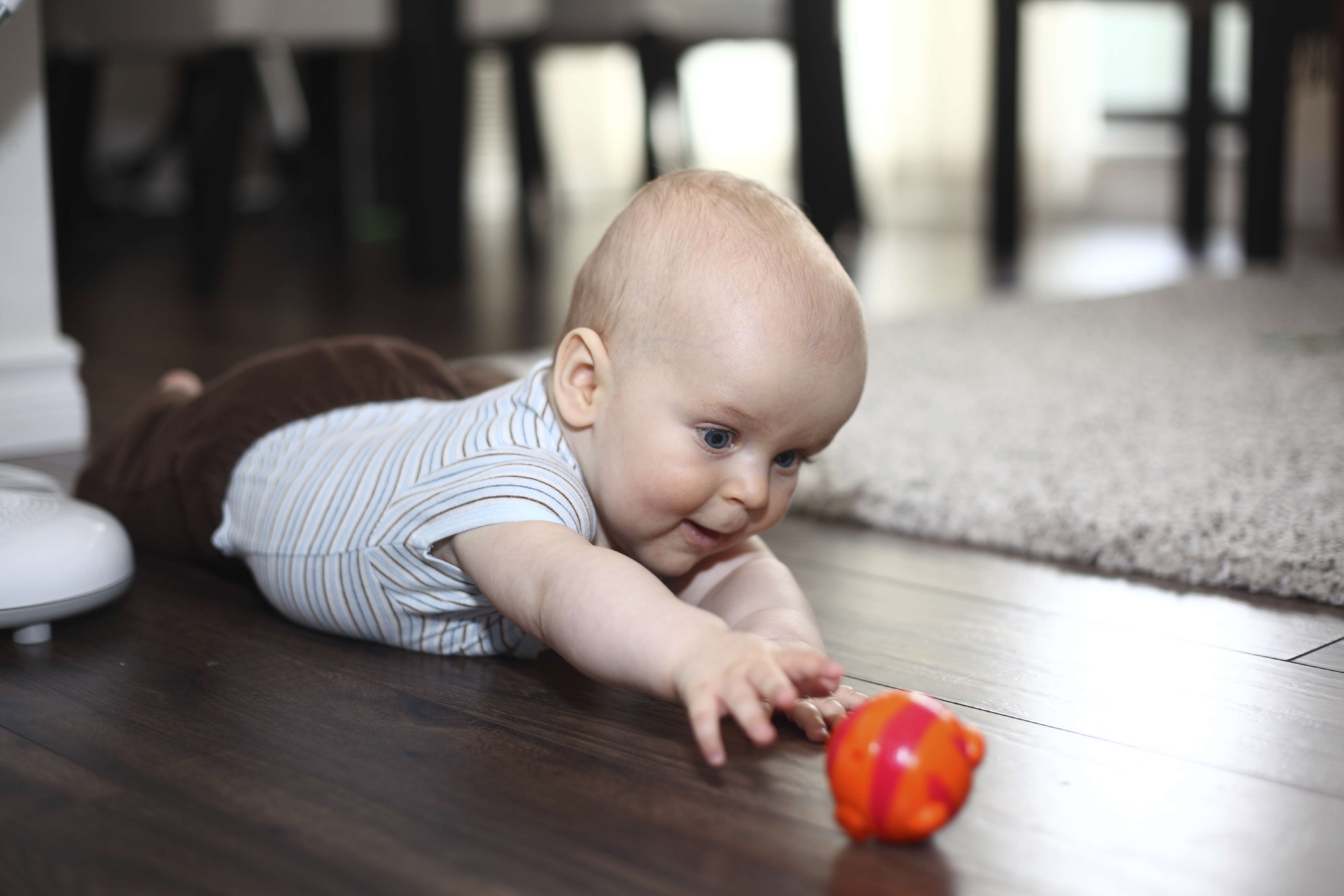First Year Milestones
 The first year of your baby’s life will see huge leaps in physical development. So what can you do to help him reach those milestones of mobility? Read on for some tips.
The first year of your baby’s life will see huge leaps in physical development. So what can you do to help him reach those milestones of mobility? Read on for some tips.
Head Control:
It all begins with head control. Your newborn will probably have a very wobbly head, and developing the neck muscles is the first step. Tummy time is vital to strengthen the neck muscles. Lay your baby on his tummy on the floor. You can purchase colorful tummy time mats or use a simple blanket. Get down on the floor with him to encourage him to lift up to look at you. Over time, he should be able to raise his head, and support himself on his elbows. You can also slowly move a colorful toy from side to side. Your baby should start to follow the toy’s direction and work those neck muscles while doing so.
Roll On:
Most babies start with rolling from stomach to side, then stomach to back. If your baby has good head control, lay her on her stomach and then get down on the floor with her. Once she rolls to the side, move so you are at her back. Use verbal encouragement so she is inclined to turn her head and body toward your voice.
Sit On Up:
Many babies start with a “front prop” sitting position. They sit up with their arms planted in front of them but will topple without the arm support. You can help them by exercising their trunk muscles. Sit behind your baby while she sits up, with your hands around her torso. Allow her to play while you move your hands every so often and give her moments where she is unsupported. It may only last for a few seconds at first, but over time you will be able to remove your hands for extended periods and she will stay up independently.
Crawling Around:
Some babies skip crawling and opt for scooting or go straight to walking. If your baby props up on his hands and knees, he may be close to crawling. Put a toy just out of reach so he is motivated to move forward to get it. If he gets frustrated, don’t deny the toy. Help him calm down, then try again.
Cruising:
With those sitting and crawling skills under control, next up is usually cruising. Your baby might pull himself up with help and start to take steps while holding on to a secure surface. The simplest way to exercise this skill is to hold his hands and let him lead the way. Practice walking with him and before you know it, he will let go of your hands and keep forging ahead.
There is a range for these developmental milestones, so don’t panic if your child isn’t able to do something by the minimum age marker. Your pediatrician should inquire about all these abilities at well-child check ups, but be aware of some possible warning signs you should share at those visits:
- At 3 months, if your child cannot support his head, turn his head toward your voice when you speak, or track an object with his eyes
- At 7 months, if his muscles seem unusually tight or he is always limp, cannot sit up with minimal assistance or cannot roll over
- At 12 months, if he doesn’t make an effort to be mobile, cannot stand with support or his body seems to lag on one side

